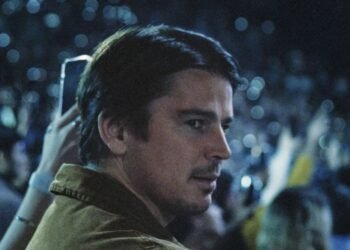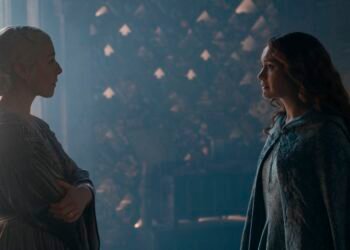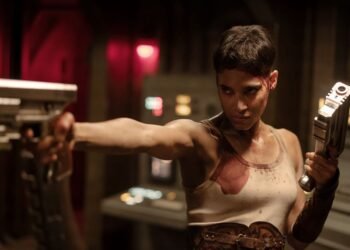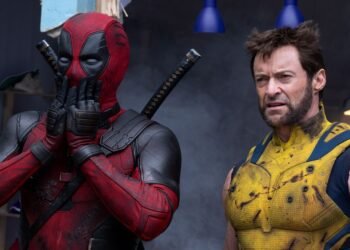When Quentin Tarantino writes his films, he tends to obsess over the kind of minutiae that may never make it to the screen, fleshing out detailed backstories for tertiary characters, and sometimes drafting entire screenplays for fictional TV shows that exist within the world of the movie. His most recent film, 2019’s Once Upon a Time in Hollywood, shows off some of that legwork, digressing repeatedly into voiceover recaps about the acting career of protagonist Rick Dalton (Leonardo DiCaprio), and tracking the arc of Rick’s made-up filmography with IMDb-like specificity. Hollywood is a heartfelt hangout film set in a fairytale iteration of the Los Angeles Tarantino grew up in, and the director takes his time in exploring every corner of it, from its bromances to its cars to its movie theaters. Still, the movie hints at a whole iceberg of character backstories and revised Hollywood history beneath its surface, so it was only a matter of time before Tarantino found an excuse to hang out with Rick and his stand-in and best friend Cliff (Brad Pitt) just a little longer.
Branded to look like a mass-market paperback from the 1970s, Tarantino’s first novel — the book version of Once Upon a Time in Hollywood — tells the same basic story as the movie while expanding in every direction. It makes room for new backstories, letting him dive down historical rabbit holes both real and invented, juxtaposing Rick and Cliff’s adventures against the darker corners of actual Hollywood history. Tarantino being Tarantino, he also takes the opportunity to revisit some of the film’s more provocative moments, and to further hint at an alleged fetish of his. Below are eight takeaways from the book, which is available June 29.
[Ed. note: Spoilers ahead for both the book and film version of Once Upon a Time in Hollywood.]

Photo: Andrew Cooper/Columbia Pictures
1. The book is a remix of the movie
Before OUATIH arrived in 2019, the question of how Tarantino would handle the historical aspects of his period piece loomed large over the movie’s release. Given his love of exploitation cinema, was there any chance he’d tell the story of the Charles Manson murders with any respect or sensitivity? And how would he depict Sharon Tate? The film toys with that trepidation, counting down toward the night of the murders before pulling the rug out from under the audience and descending into gleeful madness as Rick and Cliff kill the invading hippies. Since moviegoers have already had that twist spoiled, the book does away with it early on, explaining that Rick’s hippie-incinerating battle with Manson’s followers made him something of a hero among Nixon’s “silent majority” — a role he was not above exploiting on the late-night talk-show circuit.
Elsewhere, Tarantino has a firm grasp on how and where to translate different sequences to the page. Cliff’s visit to Spahn Ranch, for instance, is left pretty much as is, while scenes from the Western TV show Lancer are randomly scattered throughout the book, written in the style of pulp Western novels like the one Rick reads on set.
2. It’s pulp fiction (sorry)

Image: HarperCollins
Tarantino adapted Elmore Leonard’s Rum Punch into his third movie, Jackie Brown, and Leonard’s influence looms large over the rest of his work as well. Taking after Leonard’s prose, the novel’s third-person narration gets right to the point and often mimics the characters’ vulgar, pseudo-retro mode of speaking. (This occasionally results in some hilariously over-the-top clunkers. For example: “Cliff didn’t dig Jules and Jim, because he didn’t dig the chick. And it’s the kind of movie, if you don’t dig the chick, you ain’t gonna dig the flick.”)
3. Cliff Booth, mass murderer?
Tarantino almost did it. He almost gave the world Brad Pitt’s hottest, most likable character — a blue-collar everyman who loves his dog, needlessly takes his shirt off to do handiwork, and wants nothing more than to make his insecure friend happy. Cliff is all those things, but he’s also a rumored wife-killer, an ambiguity the book happily dispenses with, clarifying that Cliff indeed shot his wife with a spear gun.
Overall, the book cares much less than the movie about whether the audience likes Cliff. Tarantino’s book turns him into an invincible killer who mowed down dozens of enemy soldiers in World War II, earning two Medals of Valor and inspiring a movie (an actual Paul Wendkos movie called Battle of the Coral Sea). Cliff also leers at women, and his car ride with underage Manson Family member Pussycat is presented as more of a genuine temptation than it is in the film, with Cliff taking particular notice of — what else? — the size of her feet.
4. Brandy, dogfighting champion
As if liberated by the medium to make Cliff’s backstory as fucked up as possible, Tarantino explains that when the stuntman first acquired Brandy the pit bull, he used to enter her in dogfights — which, to be fair, would explain how she got so good at fighting. Cliff later proves he’s still the same softie from the movie, though. After Brandy gets hurt, he refuses to enter her in another fight, and he murders an associate who suggests they purposely put her in a losing fight and bet on the other dog.
5. A history lesson
As with the movie, one of the book’s better tricks is utilizing Tarantino’s knowledge of film history to craft a plausible, insanely detailed career arc for Rick Dalton. While the invented history is impressive, the book also includes a wealth of stranger-than-fiction anecdotes from actual Hollywood history, such as the tale of Walter Wanger, a producer who suspected his then-wife, actress Joan Bennett, of sleeping with her agent. Wanger shot the agent in the groin, pleaded temporary insanity, served a four-month sentence, then returned to producing high-profile movies like 1963’s Cleopatra. While some of the history is superfluous to the book’s narrative, much of it (including lengthy digressions on Charles Manson) proves that actual Hollywood history is far more lurid than the fictional stories bouncing around in Tarantino’s head.
6. Hot takes on movies
Early in the book, Tarantino dedicates an entire chapter to Cliff’s moviegoing habits, which consist of weekly viewings of the latest arthouse offerings from around the globe. As a war veteran who’s witnessed the extremes of humanity, Cliff has little patience for American movies that lack ideas, and he has a particular preference for the films of Akira Kurosawa. (The book even lists his top five Kurosawa films.) At times, the chapter invites the question of whether Tarantino is using Cliff as his mouthpiece to fire off hot takes: Only the early Fellini is good, Truffaut is boring, Antonioni was a “fraud.” It’s the most indulgent chapter in the novel, and perhaps offers an early glimpse into Tarantino’s next book: Cinema Speculation, a non-fiction “deep dive” into the films of the ’70s.

Image: Columbia Pictures
7. It’s still personal
At times, the book reads like Tarantino taking the kiddie gloves off just for the sake of it, leaning into his baser impulses as a storyteller, because who’s going to stop him? That sometimes scans as cynical — for instance, the book’s brutal depiction of Cliff murdering his wife feels designed to put the reader’s affection for the character to the test. Thankfully, Tarantino also knows when to return to the warmth and nostalgia at the heart of the film. He ends the book with a late-night phone conversation between Rick and his 8-year-old Lancer co-star, Trudi Fraser, that doubles as a teary ode to the magic of Hollywood. (That scene was cut from the movie, but a recent trailer for the book offers a glimpse of it.)
As if to reiterate how personal the film was for him, Tarantino also writes himself into the book, revealing that Trudi goes on to become an Academy Award-nominated actress who receives her third nod for a Tarantino-directed remake of John Sayles’ script for 1979’s The Lady in Red. Even more notable, perhaps, is the filmmaker’s inclusion of his own stepdad, Curt Zastoupil, as a late-appearing character. A bar musician whom Tarantino partially credits with his early love of movies, Zastoupil charms Rick in the book with a few performances of his son’s favorite songs. In exchange, Rick autographs a cocktail napkin and addresses it to “Quentin.” It’s a bracingly personal passage, and the kind of sentimental note that ultimately keeps the book from drifting too far from the warmth that anchors the movie.
8. Can Tarantino write a novel?
In one of his many acts of self-mythologizing, Tarantino has suggested he’ll retire from filmmaking after making 10 movies. (He counts OUATIH as his ninth.) If that turns out to be true, then the novelization provides a glimpse into his future as a creative working on a smaller scale, offering up contributions once every few years that expand on his existing body of work without demanding the event status of a Tarantino film. Like most of his work, the book is best appreciated as a melding of highbrow and lowbrow culture. Its crude prose follows sometimes-despicable characters across a landscape that touches on everything from Kurosawa to Tom Jones’ “What’s New Pussycat?”
The book doesn’t quite stand on its own, but that’s part of the point: Tarantino wants readers to imagine it’s just like any other movie novelization they might have bought on a whim off a spinning rack at a 7-Eleven in 1978. To his credit, it exceeds those ambitions, particularly in moments when it recaptures the film’s contagious sentimentality. Mileage may vary on some of the more shocking revelations about beloved characters from the film, but the book’s low-stakes nature offers its own response: Who cares? It’s just a novelization.















































